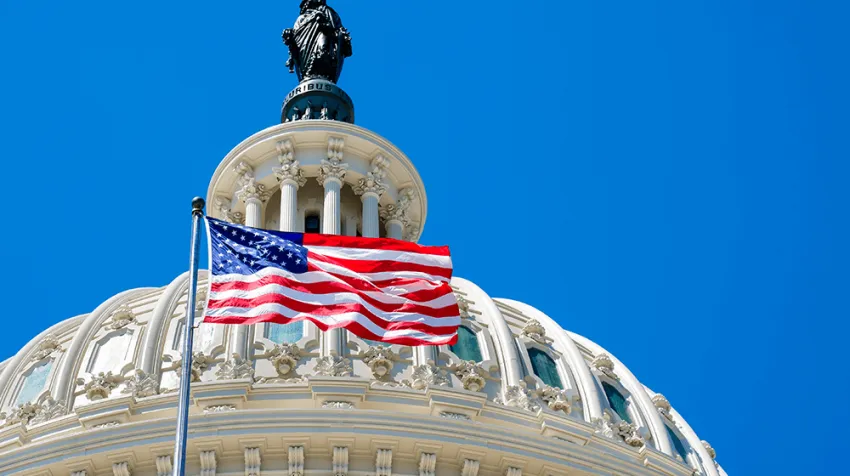Interest rates, often perceived as an arcane concept confined to economic policy circles, are, in reality, one of the most powerful and pervasive forces shaping our global financial landscape. From the monthly cost of a mortgage to the profitability of a multinational corporation, and from the valuation of stock markets to the stability of national economies, their ripple effects are profound and far-reaching. As central banks navigate complex economic currents—balancing inflation targets with growth aspirations—the question of what’s next for interest rates carries immense weight. Understanding their movement and the myriad impacts they unleash is crucial for policymakers, businesses, and individuals alike. It’s about discerning the imminent and long-term consequences that will shape our financial futures.
The Anatomy of Interest Rates: Understanding the Basics
Before delving into their impact, it’s essential to define what interest rates are and how they are primarily determined and influenced.
A. Defining Interest Rates: The Cost of Money
At its simplest, an interest rate is the cost of borrowing money or the return on lending money, expressed as a percentage of the principal amount.
- Borrowing Cost: When you take out a loan (e.g., mortgage, car loan, business loan), the interest rate determines how much extra money you pay back to the lender beyond the initial principal. A higher rate means higher monthly payments and a greater total cost over the loan’s life.
- Lending Return: When you save or invest money (e.g., in a savings account, bonds, fixed deposits), the interest rate determines the return you earn on your principal. A higher rate means more earnings over time.
- Risk Premium: Interest rates often include a risk premium, compensating the lender for the perceived risk of default by the borrower. Higher risk typically means higher interest rates.
- Time Value of Money: Interest rates reflect the time value of money—the idea that money available today is worth more than the same amount in the future due to its potential earning capacity.
B. Key Types of Interest Rates
Several different types of interest rates exist, each playing a specific role in the financial system:
- Policy Rates (Central Bank Rates): These are the benchmark rates set by a country’s central bank (e.g., the Federal Funds Rate in the US, Bank Rate in the UK, BI7DRR in Indonesia). They influence all other interest rates in the economy and are the primary tool for monetary policy.
- Prime Rate: The interest rate that commercial banks charge their most creditworthy corporate customers. It’s often closely tied to the central bank’s policy rate.
- Mortgage Rates: The interest rates charged on home loans. These can be fixed (staying the same for the loan’s duration) or adjustable/variable (fluctuating with market rates).
- Credit Card Rates: Typically much higher than other rates due to the unsecured nature of the debt and the higher risk involved.
- Savings Account Rates: The interest paid by banks on deposits, generally very low and often linked to the central bank rate.
- Bond Yields: The return an investor receives on a bond. These fluctuate based on market demand, maturity, and the creditworthiness of the issuer, and are influenced by prevailing interest rate environments.
C. Who Sets Interest Rates and How? (Monetary Policy)
In most developed economies, central banks are the primary authorities responsible for setting and influencing key interest rates. This is done as a core component of monetary policy.
- Central Bank Mandates: Central banks typically have mandates to maintain price stability (control inflation), foster maximum sustainable employment, and ensure financial stability. Interest rates are their most potent tool to achieve these goals.
- Tools of Monetary Policy:
- Adjusting Policy Rates: Raising or lowering the benchmark rate directly impacts the cost of borrowing for commercial banks, which then passes on to consumers and businesses.
- Open Market Operations: Buying or selling government securities to inject or withdraw money from the banking system, influencing the supply of money and therefore interest rates.
- Quantitative Easing (QE) / Quantitative Tightening (QT): Large-scale asset purchases (QE) to lower long-term interest rates and stimulate the economy, or their reversal (QT) to reduce the money supply.
- Reserve Requirements: Adjusting the amount of money banks must hold in reserve, impacting the money available for lending.
- Economic Indicators: Central banks closely monitor a wide range of economic indicators when making interest rate decisions: inflation rates (CPI, PCE), employment figures (unemployment rate, job growth), GDP growth, consumer spending, business investment, and global economic conditions.
The Impact of Interest Rate Changes: A Ripple Effect
Changes in interest rates, particularly those set by central banks, send ripples throughout the entire economy, affecting every sector and individual.
A. Impact on Consumers and Households
Changes in interest rates directly influence the financial well-being of everyday consumers.
- Borrowing Costs:
- Mortgages: Rising rates mean higher monthly payments for variable-rate mortgages and higher costs for new fixed-rate mortgages, potentially reducing housing affordability and cooling the housing market. Conversely, lower rates make homeownership more accessible.
- Car Loans and Personal Loans: Higher rates increase the cost of financing vehicles and other personal expenditures, potentially dampening consumer spending on big-ticket items.
- Credit Card Debt: Variable-rate credit card interest payments increase with rising rates, making it more expensive for consumers to service existing debt, which can strain household budgets.
- Savings and Investments:
- Savings Accounts: Higher interest rates benefit savers, as they earn more on their deposits. Lower rates discourage saving in traditional accounts.
- Bonds: Rising interest rates typically cause the value of existing bonds (with lower fixed coupon payments) to fall, as new bonds offer higher yields. For new bond investors, higher rates offer better returns.
- Consumer Confidence and Spending: Rising rates can reduce consumer confidence by increasing debt burdens and making borrowing more expensive, potentially leading to reduced discretionary spending. Lower rates can stimulate spending.
- Retirement Planning: For those approaching or in retirement, higher interest rates can provide better returns on fixed-income investments, but can also reduce the value of existing bond portfolios.
B. Impact on Businesses and Investment
Interest rates are a critical factor in business decision-making, influencing investment, expansion, and profitability.
- Cost of Borrowing for Businesses:
- Higher rates increase the cost for businesses to borrow money for expansion, capital investments (e.g., new machinery, factories), and even day-to-day operations. This can slow down investment and hinder economic growth.
- Lower rates make borrowing cheaper, encouraging businesses to invest and expand, potentially leading to job creation and economic stimulus.
- Profitability: Businesses with significant debt (especially variable-rate debt) will see their interest expenses rise with increasing rates, squeezing profit margins. Those with large cash reserves might benefit from higher interest earned.
- Stock Market Valuations:
- Equity Impact: Higher interest rates make it more expensive for companies to borrow, impacting future earnings. They also make fixed-income investments (like bonds) more attractive, drawing money away from riskier equities. This can lead to lower stock valuations.
- Discount Rates: In valuation models, future earnings are discounted to present value. Higher interest rates (as discount rates) reduce the present value of future earnings, depressing stock prices.
- Foreign Exchange Rates: Higher interest rates in a country can attract foreign capital seeking better returns, increasing demand for that country’s currency and causing its exchange rate to appreciate. This makes imports cheaper but exports more expensive.
C. Impact on Government and Fiscal Policy
Government borrowing costs are directly affected by interest rates, influencing national debt and fiscal policy choices.
- Cost of National Debt: Governments often borrow to finance spending. Higher interest rates mean a greater portion of the national budget must be allocated to servicing national debt interest payments, potentially crowding out spending on public services or infrastructure.
- Fiscal Stimulus: In a high-interest rate environment, using fiscal stimulus (government spending or tax cuts) can be less effective, as borrowing costs for the government are higher.
- Inflation Management: Governments often work in tandem with central banks. If the central bank is raising rates to combat inflation, fiscal policy might need to align to avoid counteracting efforts.
D. Impact on Global Economy and International Trade
Interest rate differentials between countries can significantly influence global capital flows and trade dynamics.
- Capital Flows: Higher interest rates in one country can attract foreign investors, leading to capital inflows, strengthening its currency, and potentially creating a ‘carry trade’ where investors borrow in low-interest currencies and invest in high-interest ones.
- Exchange Rates: As discussed, interest rate changes influence currency values. A stronger currency makes a country’s exports more expensive and imports cheaper, impacting its balance of trade.
- Emerging Markets: Emerging economies can be particularly vulnerable to interest rate changes in major developed economies (e.g., the US Federal Reserve). Rising US rates can lead to capital flight from emerging markets, putting pressure on their currencies and financial stability.
- Global Debt Service: For countries with significant foreign-denominated debt, rising global interest rates can make debt servicing more expensive, potentially leading to financial instability or debt crises.
Predicting the Next Move: Factors Influencing Interest Rate Trajectories
Forecasting interest rate movements is a complex task, as it depends on a confluence of economic indicators, central bank mandates, and global events. However, several key factors consistently influence their trajectory.
A. Inflationary Pressures
Inflation is arguably the single most critical factor influencing central bank interest rate decisions.
- Central Bank Mandate: Most central banks have a primary mandate to maintain price stability, typically targeting an inflation rate around 2%.
- Inflationary Spiral: If inflation rises persistently above the target, central banks are compelled to raise interest rates. Higher rates make borrowing more expensive, slowing down demand, cooling the economy, and thereby aiming to bring inflation back under control.
- Deflationary Concerns: Conversely, in a deflationary environment (falling prices), central banks might lower interest rates to stimulate spending and prevent a deflationary spiral.
- Expectations: Inflation expectations also play a crucial role. If businesses and consumers expect prices to rise significantly, they may demand higher wages or raise prices, creating a self-fulfilling prophecy. Central banks often act to anchor these expectations.
B. Economic Growth and Employment Data
The overall health of the economy, particularly employment levels, heavily influences central bank thinking.
- Strong Economic Growth: A rapidly growing economy, especially one nearing full employment, can put upward pressure on wages and prices, leading central banks to consider rate hikes to prevent overheating and inflation.
- Weak Economic Growth/Recession: In periods of slow growth or recession, central banks typically lower interest rates to make borrowing cheaper, encourage investment and spending, and stimulate economic activity to boost employment.
- Unemployment Rate: A low unemployment rate can signal that the economy is running at or near its capacity, which might lead to inflationary pressures. A high unemployment rate indicates slack in the economy, allowing for lower rates.
- Wage Growth: Strong and sustained wage growth can be inflationary, prompting central banks to act.
C. Global Economic Conditions and Geopolitics
The interconnectedness of the global economy means that international factors can significantly influence domestic interest rates.
- Global Inflation: Surges in global commodity prices (e.g., oil, food) or supply chain disruptions can import inflation, even if domestic demand is weak, forcing central banks to react.
- Major Economies’ Policies: Interest rate decisions by major central banks (e.g., the US Federal Reserve, European Central Bank) can have ripple effects globally. If the Fed raises rates, it can attract capital from other countries, putting pressure on their currencies and potentially forcing their central banks to also raise rates to prevent capital flight.
- Geopolitical Events: Wars, trade disputes, or political instability can introduce uncertainty, impact supply chains, and influence investor sentiment, all of which can affect interest rate trajectories.
- Currency Strength: Central banks also monitor their currency’s strength relative to others, as a strong currency can make imports cheaper (reducing imported inflation) but exports more expensive.
D. Government Debt Levels and Fiscal Policy
The level of government debt and the stance of fiscal policy (government spending and taxation) can interact with monetary policy.
- Debt Sustainability: High levels of government debt can make a country more sensitive to rising interest rates, as debt servicing costs increase. This can limit a central bank’s room for maneuver.
- Fiscal-Monetary Coordination: Ideally, fiscal and monetary policies should be coordinated. If fiscal policy is highly expansionary (e.g., large government spending), the central bank might need to raise rates to prevent overheating. Conversely, if fiscal policy is contractionary, the central bank might keep rates lower.
E. Financial Stability Concerns
Central banks also have a mandate to maintain financial stability.
- Asset Bubbles: Extremely low interest rates for prolonged periods can sometimes inflate asset bubbles (e.g., in housing or stock markets). Central banks might consider rate hikes to cool these markets and prevent future financial crises.
- Banking System Health: The health of the banking sector and the broader financial system is a key consideration. Rate changes can impact bank profitability, lending capacity, and the stability of financial markets.
- Debt Overhang: High levels of private or corporate debt can make an economy more vulnerable to rate hikes, as higher debt servicing costs could trigger defaults.
What’s Next? Anticipating Future Interest Rate Movements
Given the complex interplay of these factors, predicting future interest rate movements with certainty is impossible. However, based on current global economic trends, we can outline potential scenarios and their likely implications.
A. Persistent Inflationary Pressures
If global supply chain issues persist, energy prices remain elevated, and wage growth continues to accelerate, central banks might face continued pressure to maintain a hawkish stance.
- Continued Rate Hikes (or Sustained High Rates): Central banks, particularly in major economies like the US, UK, and Eurozone, may continue their rate-hiking cycles or maintain rates at elevated levels for an extended period to definitively bring inflation back to target.
- Implications: This would mean higher borrowing costs for consumers and businesses, potentially leading to a slowdown in economic growth, increased risk of recession in some regions, and continued pressure on asset markets (equities, real estate). Emerging markets could face further capital outflows.
B. Global Economic Slowdown or Recession
Should the cumulative effect of past rate hikes, coupled with ongoing geopolitical instability or other shocks, lead to a significant global economic slowdown or outright recession, central banks’ priorities might shift.
- Rate Cuts or Pause: In a severe recessionary environment, central banks would likely pause rate hikes and potentially begin to cut rates to stimulate economic activity, make borrowing cheaper, and encourage investment.
- Implications: Lower borrowing costs would aim to revive consumer spending and business investment. However, this could be a difficult balancing act if inflation remains stubbornly high (‘stagflation’ scenario). Asset markets might see a shift, with bonds potentially recovering value as rates fall, but equities remaining volatile due to recessionary fears.
C. Divergent Paths Among Central Banks
It’s increasingly likely that different central banks will pursue divergent monetary policy paths based on their specific domestic economic conditions.
- Examples: A central bank in a country with high inflation but robust growth might continue to raise rates, while another in a country facing recessionary pressures but low inflation might cut rates or keep them low.
- Implications: This divergence can lead to significant shifts in currency exchange rates, creating opportunities or challenges for international trade and cross-border investment. It also adds complexity for global businesses operating in multiple jurisdictions.
D. Role of Fiscal Policy and Government Debt
The stance of government fiscal policy will also heavily influence the future interest rate environment.
- Fiscal Austerity: If governments implement significant fiscal austerity measures (cutting spending, raising taxes) to manage debt, this could alleviate some inflationary pressure, potentially allowing central banks more flexibility to lower rates if needed to support growth.
- Continued High Spending: Persistent high government spending, particularly if financed by borrowing, could exacerbate inflationary pressures, forcing central banks to keep rates higher for longer to avoid an unstable fiscal-monetary dynamic.
E. Focus on Financial Stability
As interest rates fluctuate, central banks will remain vigilant about financial stability risks.
- Banking Sector Stress: Close monitoring of banks’ balance sheets, particularly in a rising rate environment, to ensure they can withstand potential loan defaults or asset value declines.
- Debt Vulnerabilities: Assessing vulnerabilities in corporate and household debt levels. Too rapid a rate hike could trigger widespread defaults.
- Market Liquidity: Ensuring sufficient liquidity in financial markets to prevent dislocations and instability.
Navigating the Future: Strategies for Individuals and Businesses
Understanding the potential trajectories of interest rates and their impacts is crucial for making informed financial decisions.
A. For Individuals and Households
- Manage Debt Proactively: If rates are rising, prioritize paying down variable-rate debt (e.g., credit cards, lines of credit). Consider refinancing fixed-rate debt when rates are low.
- Evaluate Mortgages: For new home buyers, decide between fixed-rate (predictable payments, but higher when rates are low) and variable-rate (lower initial payments, but risk of increase). For existing homeowners with variable rates, consider refinancing to fixed if rates are expected to rise significantly.
- Optimize Savings: In a rising rate environment, look for high-yield savings accounts or short-term fixed-income products that offer better returns.
- Review Investment Portfolios: Understand how rising or falling rates might impact different asset classes (equities, bonds, real estate) and adjust your portfolio mix to align with your risk tolerance and financial goals. Diversification remains key.
B. For Businesses
- Assess Debt Exposure: Analyze your business’s debt profile. If you have significant variable-rate debt, rising rates will increase your operating costs. Consider locking in lower fixed rates if available.
- Capital Expenditure Planning: Higher borrowing costs can make new investments more expensive. Carefully evaluate the ROI of capital projects in light of prevailing interest rates. Lower rates provide a window for expansion.
- Cash Management: Optimize cash flow. In a high-rate environment, actively manage your cash to earn higher interest on idle funds.
- Supply Chain Resilience: Interest rate changes can impact global trade and currency values. Build resilience into your supply chain to mitigate potential disruptions or increased costs.
- Market Demand Forecasting: Understand how changes in consumer borrowing costs might impact demand for your products or services, especially for interest-rate sensitive sectors like housing, automotive, or retail.
C. For Policymakers and Central Banks
- Clear Communication: Central banks must communicate their policy intentions and rationale clearly and transparently to anchor expectations and avoid market volatility.
- Data-Driven Decisions: Continue to rely heavily on a broad range of economic data, rather than solely on models, to inform interest rate decisions.
- Flexibility and Agility: Be prepared to adjust policy swiftly in response to evolving economic conditions and unforeseen shocks.
- Structural Reforms: Governments should pursue structural economic reforms (e.g., in labor markets, competition policy) that can boost productivity and alleviate inflationary pressures without solely relying on monetary policy.
- International Coordination: For global issues like inflation or financial stability, international coordination among central banks and finance ministries can enhance the effectiveness of individual policies.
Conclusion
Interest rates are undeniably a central nervous system of the global economy, their movements sending powerful signals that reverberate across markets, businesses, and households. The question of what’s next for interest rates is not merely an academic exercise for economists; it is a critical concern that demands attention from every participant in the financial system.
As we move forward, central banks face an intricate balancing act: taming persistent inflation without triggering a deep recession, while navigating the complexities of global economic divergence and mounting government debt. The implications of their decisions—whether to hike, hold, or cut rates—will manifest in the cost of borrowing, the returns on savings, the valuations of assets, and the overall trajectory of economic growth.
For individuals, businesses, and governments, understanding these dynamics and proactively adapting financial strategies will be paramount. The future interest rate environment will demand agility, foresight, and a keen awareness of the interconnected forces at play. By discerning the next impacts, we can better position ourselves to navigate the challenges and capitalize on the opportunities that lie ahead, ensuring greater financial resilience and stability in an ever-evolving economic world.











